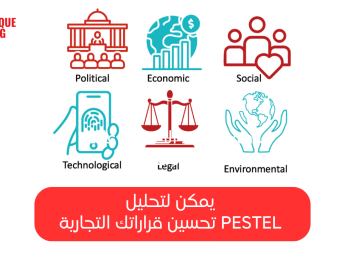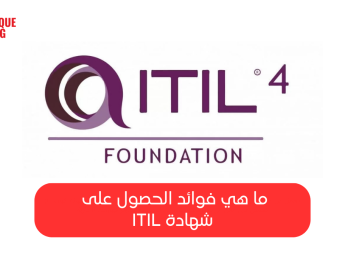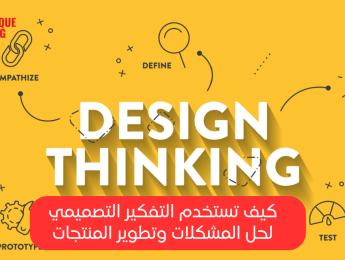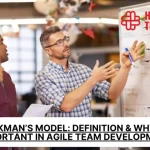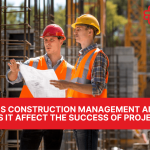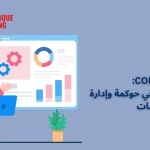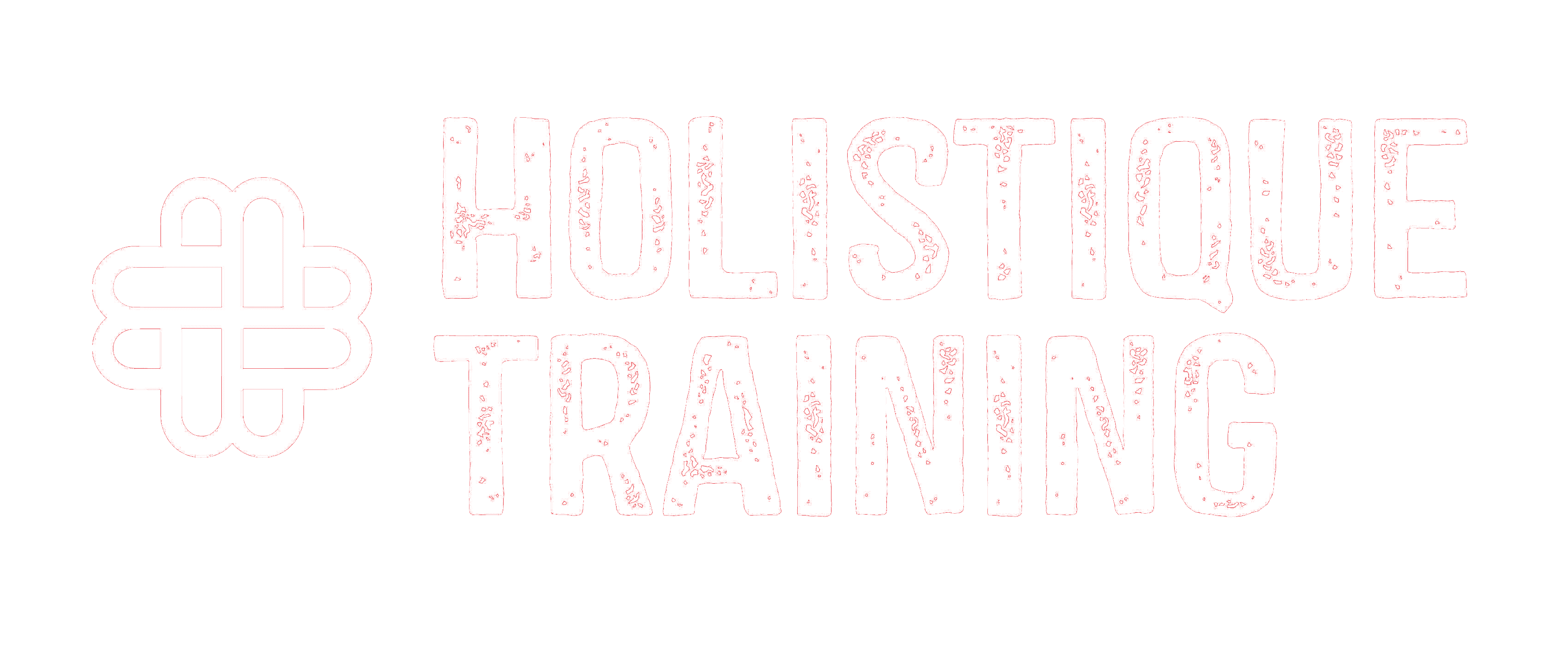- Table of Contents
- Introduction
- What Is a Change Readiness Assessment?
- Who Is Involved in the Change Readiness Assessment?
- 1- Executive Leadership
- 2- Change Management Team
- 3- Employees
- 4- External Consultants (Optional)
- Determining the Right Timing for Change Readiness Assessment
- How a Change Readiness Assessment Helps Grow Your Business
- Identifying Potential Roadblocks
- Enhancing Leadership Effectiveness
- Engaging Employees
- Improving Change Planning
- Alleviating Resistance
- Building a Change-Ready Culture
- Key Elements to Include in a Change Readiness Assessment
- Organisational Culture
- Leadership Support
- Change Strategy and Planning
- Communication and Stakeholder Engagement
- Employee Readiness and Engagement
- Change Capacity and Resources
- Psychological and Emotional Factors
- Continuous Feedback Loops
- Conducting a Change Readiness Assessment
- 1. Defining the Scope and Objectives
- 2. Assembling a Cross-Functional Team
- 3. Selecting Assessment Methods
- 4. Designing Assessment Tools
- 5. Gathering Data
- 6. Analysing and Interpreting Data
- 7. Developing Actionable Insights
- 8. Implementing Change Strategies
- 9. Monitoring and Feedback
- 10. Iterative Assessments
- Change Readiness Assessment Template
- 1. Introduction:
- 2. Scope and Objectives:
- 3. Assessment Team:
- 4. Assessment Methods:
- 5. Assessment Tools:
- 6. Data Collection:
- 7. Data Analysis and Interpretation:
- 8. Actionable Insights and Recommendations:
- 9. Change Implementation Plan:
- 10. Monitoring and Feedback Mechanisms:
- 11. Conclusion:
- AI and Change Readiness
- Data Analysis and Pattern Recognition
- Sentiment Analysis
- Predictive Analytics
- Employee Feedback Analysis
- Customised Training and Support
- Real-time Monitoring and Feedback Loops
- Risk Management and Scenario Analysis
- Cultivating a Growth Mindset: A Catalyst for Successful Change
- Embracing Challenges
- Learning from Feedback
- Persistence in the Face of Setbacks
- Promoting a Culture of Continuous Improvement
- Encouraging Innovation and Creativity
- Developing Resilient Leaders
- Conclusion
Introduction
Change is an inevitable part of any business's journey. Organisations must continuously evolve to thrive, Whether implementing new processes, adopting advanced technologies, or adjusting strategies to meet market demands. However, managing change can be a complex and challenging task. This is where a Change Readiness Assessment comes into play. In this blog post, we will delve into the concept of Change Readiness Assessment, its key elements, and how it can help your business grow.
What Is a Change Readiness Assessment?
A Change Readiness Assessment systematically evaluates an organisation's preparedness for change. It aims to gauge the organisation's ability to effectively handle and adapt to changes. By conducting a comprehensive assessment, businesses can identify potential barriers, risks, and gaps in their current state, allowing them to devise appropriate strategies for successful change implementation. After conducting this assessment and applying the changes, it’s important to benchmark your performance to ensure your growth and change management are heading in the right direction.
Who Is Involved in the Change Readiness Assessment?
A successful Change Readiness Assessment is a collaborative effort involving various organisational stakeholders. Their collective insights and expertise are invaluable in comprehensively evaluating the organisation's readiness for change. Here are the key participants involved in this crucial process:
1- Executive Leadership
Senior leaders play a crucial role in driving change initiatives. Their commitment, support, and vision are essential for the organisation to embrace change. While there's limited research on this specifically in organisational change, existing data indicates that confidence also influences the outcomes of change programmes, according to the Project Management Institute. So, ensure your leaders are confident in the goals you want to achieve for your organisation.
2- Change Management Team
A dedicated Change Management Team acts as the backbone of the assessment process. Comprising experts in change management, project management, and organisational behaviour, this team orchestrates the entire change journey. They bring a wealth of knowledge and experience to the table, enabling them to design effective assessment methodologies, interpret data, and strategies based on the findings.
The team's diverse skill set allows them to analyse various aspects of readiness, from organisational culture to employee engagement. By synthesising this information, they can pinpoint specific areas that need attention and develop tailored strategies to address challenges. Their expertise ensures that the assessment is thorough, insightful, and actionable.
3- Employees
Often underestimated but incredibly significant are the employees themselves. They are the ones directly impacted by any organisational change. Involving employees from different levels and departments is essential for a holistic understanding of the organisation's readiness. Employees possess unique insights into the day-to-day operations, workplace dynamics, and potential hurdles that might impede change adoption.
Engaging employees in the assessment process is not just about gathering data; it’s about creating a sense of ownership and empowerment. Employees who feel heard and valued are more likely to embrace the changes. Their feedback helps tailor change strategies, ensuring the initiatives resonate with the workforce. Moreover, involving employees fosters a culture of transparency, collaboration, and mutual respect, all of which are essential for a successful Change Readiness Assessment.
4- External Consultants (Optional)
In some cases, organisations may opt to involve external consultants or change management experts. These professionals bring an unbiased perspective and a wealth of experience from working with various organisations across different industries. Their external viewpoint can provide valuable insights that internal teams might overlook due to their proximity to the organisation. Consultants can offer best practices, benchmark data, and innovative solutions, enriching the assessment process and ensuring that the organisation benefits from a well-rounded evaluation.
While not mandatory, including external consultants can be particularly beneficial when organisations are navigating complex changes, mergers, or industry-specific challenges. Their expertise augments the internal team’s efforts, enhancing the overall quality and depth of the assessment.
In essence, the Change Readiness Assessment is a collaborative endeavour where the wisdom of executive leaders, the expertise of the change management team, the insights of employees, and, occasionally, the external perspective of consultants converge. Together, these stakeholders form a powerful alliance, driving the organisation towards a future where change is managed and embraced, setting the stage for sustainable growth and success.
Determining the Right Timing for Change Readiness Assessment
Conducting a Change Readiness Assessment at the right juncture is crucial for effectiveness. Ideally, organisations should consider initiating this assessment when contemplating a significant change, such as implementing new technologies, restructuring processes, or entering new markets. It's essential to conduct the assessment before the change process kicks in to identify potential obstacles and gaps in readiness. Additionally, revisiting the assessment during key milestones of the change initiative provides valuable insights for course correction, ensuring that the strategies remain aligned with organisational goals. Regular check-ins post-implementation are equally vital, as they allow organisations to gauge the long-term impact of the changes and make necessary adjustments, fostering a culture of continuous improvement and adaptability. This proactive approach is especially relevant considering that approximately 79.7% of individuals must adjust their businesses every two to five years, according to Walk Me, underlining the need for organisations to be agile and responsive in their change management strategies.
How a Change Readiness Assessment Helps Grow Your Business
Implementing organisational change is akin to embarking on a transformative journey. It demands meticulous planning, precise execution, and unwavering commitment. A Change Readiness Assessment acts as a guiding compass, steering businesses toward successful change implementation and sustainable growth. Let’s delve into how this assessment catalyses business growth:
Identifying Potential Roadblocks
One of the primary benefits of a Change Readiness Assessment is its ability to unearth potential roadblocks to change. These roadblocks could range from deeply ingrained cultural norms to resistance among employees. By identifying these challenges early in the process, businesses can develop proactive strategies to mitigate risks. This proactive approach ensures smoother transitions, minimises disruptions, and prevents costly setbacks, enabling the organisation to stay focused on its growth trajectory.
Enhancing Leadership Effectiveness
The assessment provides valuable insights into the effectiveness of organisational leadership. Leaders, being the driving force behind change initiatives, can refine their skills based on these insights. Whether it's improving communication styles, demonstrating stronger commitment, or fostering a more supportive environment, leaders can adapt their approaches to catalyse change. Effective leadership ensures the success of the current change and equips the organisation to navigate future transformations with confidence, fostering long-term growth.
Engaging Employees
Actively involving employees in the assessment process creates a sense of ownership and engagement. Their perspectives, concerns, and suggestions are considered, making them feel valued and heard. This inclusivity fosters a positive organisational culture where employees are more likely to support and actively participate in the change initiatives. Engaged employees are not just compliant but enthusiastic contributors, driving innovation and productivity. Their buy-in ensures that the organisation moves forward cohesively, propelling growth initiatives with collective energy and commitment.
Improving Change Planning
A Change Readiness Assessment illuminates the organisation's change planning efforts. It provides critical feedback on the clarity of objectives, the feasibility of timelines, and the availability of necessary resources. This information allows businesses to refine their change strategies, establish realistic goals, and develop actionable plans. Improved planning increases the likelihood of successful implementation. A well-executed plan achieves immediate objectives and sets the stage for subsequent growth phases, creating a ripple effect that fuels continuous advancement.
Alleviating Resistance
Resistance is a common reaction to change, often rooted in fear, uncertainty, or lack of information. The Change Readiness Assessment helps businesses understand the reasons behind this resistance. Businesses can alleviate resistance by proactively addressing these concerns through targeted communication, training, or support mechanisms. Acknowledging and validating employees’ concerns fosters trust and transparency, leading to higher acceptance rates for change initiatives. Reduced resistance ensures smoother transitions, allowing the organisation to focus its energy on growth-oriented activities.
Building a Change-Ready Culture
Implementing Change Readiness Assessments periodically instils a culture of adaptability and continuous improvement within the organisation. By regularly evaluating their readiness for change, businesses create a mindset that perceives change not as a disruption but as an opportunity for growth. Such a culture encourages innovation, agility, and resilience, positioning the organisation to thrive in dynamic market environments. A change-ready culture ensures the organisation is always prepared to embrace new opportunities, technologies, and strategies, fostering sustainable long-term growth.
In short, a Change Readiness Assessment is not just a tool but a transformative process that empowers businesses to navigate the complexities of change with finesse. By identifying challenges, engaging employees, enhancing leadership effectiveness, and fostering a change-ready culture, businesses can manage change effectively and leverage it as a springboard for growth. Embracing the insights gained from the assessment, organisations can evolve, innovate, and prosper in an ever-changing business landscape.
Key Elements to Include in a Change Readiness Assessment
A thorough and effective Change Readiness Assessment delves deep into various organisational aspects to comprehensively understand the organisation's readiness for change. Here are the key elements that should be considered in a Change Readiness Assessment:
Organisational Culture
Understanding the existing organisational culture is fundamental. This involves evaluating the organisation's openness to new ideas, willingness to take risks, and communication channels. An organisation with an innovative and adaptive culture is more likely to embrace change positively. Assessing the cultural nuances provides critical insights into how readily employees will accept and adapt to new initiatives.
Leadership Support
Effective change requires unwavering support from leaders. Assessing the leadership’s commitment to change, their communication style, and their ability to align employees with the change vision are essential aspects. Leaders must lead by example, demonstrating their enthusiasm for change and encouraging others to do the same. Identifying areas lacking leadership support allows for targeted interventions and support structures.
Change Strategy and Planning
Evaluating the organisation’s change strategy is critical for successful implementation. This includes assessing the clarity of objectives, the presence of a well-defined roadmap, and the availability of resources to support the change effort. A well-crafted strategy acts as a guiding light, ensuring that every step taken aligns with the overarching goals of the change initiative.
Communication and Stakeholder Engagement
Communication is the lifeline of change management. Assessing the effectiveness of communication channels, the inclusiveness of stakeholder engagement, and the clarity of messaging are paramount. Clear and transparent communication builds trust and minimises misunderstandings. Engaging stakeholders at every level ensures that their concerns are addressed, fostering a supportive environment for change.
Employee Readiness and Engagement
Employees are at the heart of any organisational change. Evaluating their readiness and engagement levels is crucial. This involves assessing their knowledge of impending changes, perceived benefits and risks, and willingness to embrace change. Employees who understand the reasons behind the change and feel valued and supported are more likely to contribute to the change process actively.
Change Capacity and Resources
Assessing the organisation’s capacity to handle change is a foundational element. This includes evaluating the availability of resources, both human and technological, the skills within the workforce, and the overall capabilities required for successful change implementation. Identifying resource gaps helps in proactive planning, ensuring the organisation is well-equipped to face change challenges.
Psychological and Emotional Factors
Human psychology plays a significant role in change management. Fear of the unknown, loss of control, and concerns about competence are common emotional factors that can impede change acceptance. Addressing these psychological aspects through empathetic communication, training, and support mechanisms is crucial. Acknowledging and validating employees’ emotions creates a sense of psychological safety, making them more receptive to change.
Continuous Feedback Loops
Change Readiness Assessment is not a one-time activity but an ongoing process. Implementing continuous feedback loops allows organisations to adapt their strategies based on real-time insights. Regular feedback from employees, stakeholders, and even customers provides valuable data that can be used to refine change initiatives, making them more responsive to evolving needs and challenges.
By considering these key elements in a Change Readiness Assessment, organisations comprehensively understand their current state. This allows them to develop targeted strategies, address potential challenges, and create an environment where change is accepted and embraced. This holistic approach sets the stage for successful change implementation, fostering a culture of adaptability and resilience within the organisation.
Conducting a Change Readiness Assessment
While the specific details of the change readiness assessment may vary based on the organisation's size, industry, and the nature of the change, the fundamental framework remains consistent. Here's a step-by-step guide illustrating how a Change Readiness Assessment might look like in practice:
1. Defining the Scope and Objectives
Begin by clearly defining the scope of the assessment. What is the specific change initiative or transformation under consideration? Outline the objectives of the assessment, including what you aim to achieve, the key areas you plan to evaluate, and the expected outcomes.
2. Assembling a Cross-Functional Team
Form a multidisciplinary team comprising change management experts, HR professionals, organisational psychologists, and representatives from various departments. Diverse perspectives ensure a comprehensive assessment covering all aspects of the organisation's readiness for change.
3. Selecting Assessment Methods
Choose a mix of qualitative and quantitative assessment methods. Qualitative methods like interviews, focus groups, and open-ended surveys allow for in-depth insights into employees' perceptions and emotions. Quantitative methods, such as structured surveys and data analysis, provide statistical data and trends that can be analysed objectively.
4. Designing Assessment Tools
Develop customised assessment tools tailored to the specific change initiative. Surveys and questionnaires should be carefully crafted to cover key elements like organisational culture, leadership support, communication effectiveness, employee engagement, and resource availability. Ensure that questions are clear, unbiased, and designed to elicit meaningful responses.
5. Gathering Data
Administer the assessment tools to employees at various levels within the organisation. Collect both qualitative and quantitative data. Conduct interviews and focus group sessions to gain qualitative insights. Utilise online survey platforms and data analysis tools to collect and analyse quantitative data efficiently.
6. Analysing and Interpreting Data
Once the data is collected, the cross-functional team collaborates to analyse and interpret the findings. Look for patterns, trends, and outliers. Identify areas of strength and areas that require improvement. Consider both positive aspects that can be reinforced and challenges that need targeted interventions.
7. Developing Actionable Insights
Translate the analysed data into actionable insights and recommendations. Clearly outline the key findings, highlighting areas that need attention. Propose specific strategies, initiatives, and interventions to address the identified gaps. Tailor these recommendations to align with the organisation's overall goals and the specific objectives of the change initiative.
8. Implementing Change Strategies
Develop a detailed change implementation plan based on the assessment's insights. Define roles and responsibilities, set timelines, and allocate resources. Communicate the plan to all stakeholders, ensuring transparency and clarity. Implement the proposed strategies, continuously monitoring progress and making necessary adjustments as the change initiative unfolds.
9. Monitoring and Feedback
Implement a system for continuous monitoring and feedback. Establish regular checkpoints to assess the progress of the change initiative. Gather feedback from employees and stakeholders on the effectiveness of the implemented strategies. Use this feedback to refine the change management approach further.
Metric | Description | Purpose |
Organisational Culture | Evaluate openness, risk-taking, and communication. | Assess adaptability and acceptance of change. |
Leadership Alignment | Assess the alignment of leaders with the change vision. | Ensure consistent support and communication. |
Employee Engagement | Measure employees' enthusiasm and involvement in change. | Gauge level of active participation and commitment. |
Communication Effectiveness | Evaluate clarity, inclusivity, and transparency of communication. | Identify potential gaps and barriers in information flow. |
Resource Availability | Assess the availability of human, financial, and technological resources. | Ensure the organisation is equipped to support the change. |
Table 1: Metrics to measure a change readiness assessment
10. Iterative Assessments
Recognise that change is a dynamic process. Conduct iterative Change Readiness Assessments at regular intervals, especially during key milestones of the change initiative. These iterative assessments provide valuable feedback on the effectiveness of the implemented strategies, allowing for continuous improvement and adaptation.
In summary, a Change Readiness Assessment involves a thoughtful and structured approach, integrating qualitative and quantitative methods to evaluate an organisation's readiness for change. By following this systematic process, organisations can gain invaluable insights, develop targeted strategies, and confidently navigate change, ensuring a higher likelihood of successful implementation and sustained growth.
Change Readiness Assessment Template
Organisation: [Organisation Name]
Change Initiative: [Name of the Change Initiative]
Assessment Date: [Date]
1. Introduction:
A brief overview of the change initiative and its objectives.
Purpose of the Change Readiness Assessment.
2. Scope and Objectives:
Scope of the assessment (e.g., departments, teams, processes).
Objectives of the assessment (what do you aim to achieve through this assessment).
3. Assessment Team:
Names and roles of team members involved in the assessment.
Explanation of team members’ expertise relevant to the assessment.
4. Assessment Methods:
Description of the assessment methods used (surveys, interviews, focus groups, etc.).
Explanation of why these methods were chosen and how they align with the assessment objectives.
5. Assessment Tools:
Overview of the surveys, questionnaires, and interview guides used.
An explanation of the questions was included, as well as the rationale behind their selection.
6. Data Collection:
Details of how data was collected (dates, methods used, participants involved).
Explanation of any challenges faced during data collection and how they were overcome.
7. Data Analysis and Interpretation:
Summary of key findings from the assessment.
Identification of patterns, trends, strengths, and areas of improvement.
Insights derived from qualitative data (interviews, focus groups).
8. Actionable Insights and Recommendations:
Clear presentation of actionable insights based on the assessment findings.
Specific recommendations for addressing identified gaps and challenges.
Strategies for leveraging strengths and reinforcing positive aspects.
9. Change Implementation Plan:
Detailed plan outlining how the recommended strategies will be implemented.
Roles and responsibilities of team members involved in the implementation.
Timelines, milestones, and deadlines for each phase of the implementation.
10. Monitoring and Feedback Mechanisms:
Explanation of how the change implementation will be monitored.
Details of feedback mechanisms to assess the effectiveness of implemented strategies.
Regular checkpoints and intervals for follow-up assessments.
11. Conclusion:
Summary of the overall readiness of the organisation for the change initiative.
Recognition of areas where the organisation is well-prepared and areas needing additional focus.
Acknowledge the importance of continuous assessment and adaptation throughout the change process.
AI and Change Readiness
In the digital age, technology has become an indispensable ally in various aspects of business operations. Regarding Change Readiness Assessment, harnessing the power of Artificial Intelligence (AI) offers a transformative approach. Effective change management practices are foundational in establishing an organisational framework ready for AI integration. Surprisingly, 37% of executives overlook the significance of operational model adjustments while incorporating AI, resulting in transformative failures within the organisation, according to Correlation One. Here’s how AI can be leveraged in Change Readiness Assessment:
Data Analysis and Pattern Recognition
AI algorithms can process vast amounts of organisational data, identifying patterns and correlations that might not be apparent to human analysts. By analysing historical data, AI can discern trends related to past change initiatives, employee responses, and success factors. This analysis provides valuable context, enabling organisations to make informed decisions and tailor their current change strategies based on historical patterns of success and failure.
Sentiment Analysis
Natural Language Processing (NLP) algorithms, a subset of AI, can perform sentiment analysis on employee feedback, surveys, and communication channels. By understanding the sentiment behind employees' responses, organisations can gauge the emotional aspects of change. Positive sentiment might indicate areas of strength, while negative sentiment could highlight potential challenges. Addressing these emotional responses with empathy and targeted support can significantly impact change acceptance and employee morale.
Predictive Analytics
AI-powered predictive analytics can forecast potential challenges and opportunities related to change initiatives. By analysing various factors, such as organisational culture, employee engagement levels, and market dynamics, AI can predict the likelihood of success for specific change strategies. Predictive insights empower organisations to proactively address potential roadblocks, enabling them to implement preemptive measures and increase the chances of successful change adoption.
Employee Feedback Analysis
Gathering feedback from employees is a crucial part of the Change Readiness Assessment. AI tools can analyse this feedback in real time, identifying recurring themes, concerns, and suggestions. Natural Language Processing algorithms can categorise feedback, making it easier for organisations to pinpoint areas that require immediate attention. Analysing employee feedback through AI speeds up the analysis process and ensures that no valuable insights are overlooked.
Customised Training and Support
AI-driven assessment tools can identify specific skill gaps and areas of knowledge deficiency among employees. Based on these insights, customised training programmes can be developed using adaptive learning algorithms. Employees receive training tailored to their needs, ensuring they can adapt to the upcoming changes. Customised training enhances employee confidence, making them more receptive to change initiatives and reducing resistance.
Real-time Monitoring and Feedback Loops
AI technologies enable real-time monitoring of change initiatives. By continuously analysing data streams, organisations can assess the effectiveness of their strategies as they unfold. Real-time feedback loops facilitate agile decision-making, allowing organisations to make necessary adjustments promptly. This agile approach ensures that change initiatives remain aligned with organisational goals, fostering an environment of continuous improvement and adaptability.
Risk Management and Scenario Analysis
AI algorithms can simulate various change scenarios and assess their potential impact on the organisation. Businesses can conduct scenario analyses to identify high-risk scenarios and formulate contingency plans. AI-driven risk management tools can quantify risks, allowing organisations to prioritise mitigation efforts. Understanding the potential risks associated with specific change strategies empowers organisations to make data-driven decisions, minimising uncertainties and increasing the likelihood of successful implementation.
Incorporating AI into the Change Readiness Assessment enhances the accuracy and efficiency of the process and positions organisations at the forefront of change management practices. By leveraging AI technologies, businesses can proactively identify challenges, effectively engage employees, and implement change initiatives precisely, ensuring sustainable growth and resilience in the face of evolving market demands.
Cultivating a Growth Mindset: A Catalyst for Successful Change
In the realm of change management, having a growth mindset is not just an asset; it’s a fundamental catalyst for successful transformation. A growth mindset, popularised by psychologist Carol Dweck, refers to the belief that abilities and intelligence can be developed with dedication, learning, and hard work. Embracing a growth mindset within an organisation can profoundly impact its approach to change. Here’s how cultivating a growth mindset plays a pivotal role in navigating change:
Embracing Challenges
Individuals with a growth mindset view challenges not as insurmountable obstacles but as opportunities to learn and grow. Similarly, organisations fostering a growth mindset approach change initiatives as challenges to be embraced. Instead of fearing change, they see it as a chance to innovate, improve, and evolve. Embracing challenges with a growth mindset encourages creative problem-solving and resilience in the face of adversity.
Learning from Feedback
A growth mindset encourages a proactive approach to feedback. Employees and organisations with a growth mindset value feedback as a means to learn and improve. In the context of change management, feedback becomes a valuable tool for assessing the effectiveness of change initiatives. By viewing feedback as constructive input rather than criticism, organisations can iteratively refine their strategies, ensuring they align more closely with organisational goals and employee needs.
Persistence in the Face of Setbacks
Change initiatives often face setbacks and obstacles. A growth mindset fosters resilience and persistence. Employees and leaders with a growth mindset perceive setbacks not as failures but as temporary setbacks on the path to success. This resilience ensures that when challenges arise during change initiatives, teams are more likely to persevere, iterate on their strategies, and find alternative solutions, ultimately leading to successful outcomes.
Promoting a Culture of Continuous Improvement
Organisations with a growth mindset inherently promote a culture of continuous improvement. Change is seen as a continuous process, where each iteration presents an opportunity to learn, adapt, and enhance. A growth mindset encourages teams to analyse both successes and failures, extracting valuable lessons from each experience. This ongoing learning and adaptation enable organisations to refine their change management approaches, making them more effective with every iteration.
Encouraging Innovation and Creativity
A growth mindset fuels innovation and creativity. Employees who believe their ideas and efforts can lead to positive change are more likely to think outside the box. This creative thinking can lead to novel solutions, innovative approaches, and new ways of engaging employees during change initiatives. Encouraging innovative thinking through a growth mindset ensures that change strategies are effective, adaptive, and forward-thinking.
Developing Resilient Leaders
Leadership plays a pivotal role in change management. Leaders with a growth mindset are open to learning, adapting, and seeking input from others. They are unafraid to admit mistakes and view setbacks as opportunities to grow. Such leaders inspire confidence and trust among employees, creating a supportive environment where change is met with enthusiasm rather than resistance. Resilient leaders with a growth mindset can navigate complex change scenarios with poise, leading their teams toward successful outcomes.
Incorporating a growth mindset into the organisational culture transforms how change is perceived and managed. By fostering a belief in the potential for growth and development, organisations can create an environment where change is accepted and embraced. A growth mindset empowers individuals and organisations to face change with optimism, creativity, and resilience, ensuring that they adapt to change and thrive and grow in the process.
Conclusion
Change is an inevitable aspect of any successful business. Organisations can proactively evaluate their preparedness for change by conducting a Change Readiness Assessment, identifying potential roadblocks, and developing strategies to facilitate successful implementation. This assessment empowers leaders, engages employees, and enhances the organisation's overall readiness for growth. Embracing change readiness drives successful transformations and positions businesses to thrive in an ever-evolving marketplace. Ready to take your organisation's growth to the next level? Enrol in our transformative course, ‘Benchmarking Your Performance & Making Continuous Improvements,’ and learn to harness the power of change readiness for unparalleled success in the dynamic world of business. Don't just adapt; lead the change!





